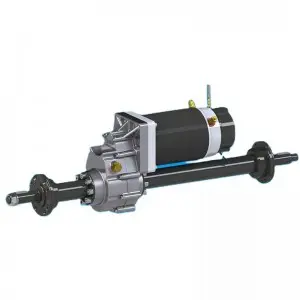The transaxle is a critical component in a vehicle’s driveline, responsible for transmitting power from the engine to the wheels. It combines the functions of a transmission that changes gears and an axle that transfers power to the wheels. An important function of the transaxle is freewheel control, which plays a vital role in the overall performance and functionality of the vehicle.
Transaxle freewheel control is a mechanism that allows the wheels to spin freely when the vehicle is coasting or decelerating without causing the engine to slow down or stall. This is accomplished through the use of a freewheel device, which disconnects the engine from the wheels when the vehicle is without power. This allows the vehicle to drive smoothly and efficiently, reducing drag and improving fuel efficiency.
Freewheel control is particularly important on front-wheel drive vehicles, where the transaxle is located at the front of the vehicle and is responsible for driving and steering the front wheels. In these vehicles, freewheel control allows the wheels to rotate independently of the engine, providing a smoother, more controlled driving experience.
In addition to improving fuel efficiency and drivability, freewheel control reduces wear on driveline components. By allowing the wheels to spin freely as the vehicle coasts, freewheel control reduces stress on the transmission and other driveline components, extending their service life and reducing the need for maintenance and repairs.
Transaxle freewheel control is typically operated by a combination of mechanical and electronic components. In some vehicles, freewheel control is automatically activated when the vehicle is coasting, while in others it can be activated manually by the driver. The system is designed to provide a seamless transition between free coasting and power delivery, ensuring a smooth, responsive driving experience.
One of the main benefits of transaxle freewheel control is that it helps improve fuel efficiency. By allowing the wheels to spin freely while the vehicle is coasting, freewheel control reduces the power required from the engine, thereby lowering fuel consumption. This is particularly beneficial in stop-and-go traffic and urban driving conditions, where frequent decelerations and accelerations can have a significant impact on fuel economy.
Another important benefit of freewheel control is that it helps provide a smoother, more comfortable ride. By allowing the wheels to rotate independently of the engine, freewheel control reduces the bumps and jerks that can occur when the vehicle is coasting or slowing down. This will result in a more refined and enjoyable driving experience for the driver and passengers.
Freewheel control also plays a role in enhancing the vehicle’s overall performance and handling. By allowing the wheels to spin freely, flywheel control reduces drag and drag on the driveline, allowing the vehicle to roll smoother and more efficiently. This results in improved acceleration, better traction and enhanced maneuverability, especially in challenging driving conditions.
In summary, transaxle freewheel control is a critical component of a vehicle’s drivetrain, contributing to improved fuel efficiency, a smoother ride, and enhanced performance and handling. By allowing the wheels to spin freely as the vehicle coasts, freewheel control plays a vital role in optimizing the vehicle’s overall functionality and efficiency. As automotive technology continues to advance, the development of more advanced and sophisticated flywheel control systems is expected to further improve the driving experience and efficiency of future vehicles.
Post time: Aug-09-2024


